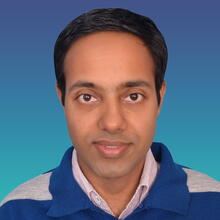

Akshay NANDA works as CAE Analyst at Mercedes-Benz R&D India. Akshay has around five years of experience in NVH simulations and is currently supporting rear axle whine simulations for Mercedes-Benz Cars.
Model Reduction Methodology for Large-Scale Gear Design Optimization
Developing transmission with optimal NVH performance is one of the biggest challenges in the automotive industry due to the shift towards quiet electric drives. Gear whine, a structure-borne vibration of the transmission system, has emerged as a significant NVH concern. Static transmission error is considered a key factor causing gear whine and therefore has also become a standard parameter for gear-train NVH optimization. However, the dynamic response of hypoid gear systems is a complex combination of various other time-varying mesh parameters like the movement of mesh point and mesh stiffness variation. Evaluating the dynamic response of the hypoid gear driveline system is computationally costly and, therefore, cannot be directly used as a parameter for large-scale design optimization. We have developed a reduced-order simulation model, which can accurately predict the dynamic response of the hypoid gear system within a few seconds, thus allowing it to be used directly as a parameter for optimization. Also, many simulations are required to analyze the robustness and sensitivity of the gear design to various manufacturing and assembly uncertainties that can now be performed efficiently.


Atsushi TSUBOUCHI joined Honda Motor in 1998 and was involved in performance-based design considering automotive vehicle dynamics. After that, Atsushi moved to a Formula One car development department in the UK and was in charge of the dynamic behavior based on the measurements and the CAE results The experience in the formula car showed him great potential in the integration of CAE into IT infrastructure. Currently, Atsushi is responsible for the platform development, performance-based design, and development process re-engineering in chassis design.
Vision for Performance-Based Design Using Simpack Vehicle Dynamics as a Digital Innovation
Digital solution with CAE technology is mandatory in automotive vehicle dynamics, such as handling and ride comfort. Especially, virtual verification with Multi-Body Simulation (MBS) is becoming more and more essential to provide a specification of each component. On the other hand, MBS has a challenge in shortening the entire workflow, including calculation, verification, and its management, due to the complexity of the model structure. The speed and robustness of the Simpack solver are expected to resolve it in combination with an efficient workflow in the design process. This presentation introduces a Simpack workflow for handling and ride comfort and its future vision, bringing efficiency to vehicle development.
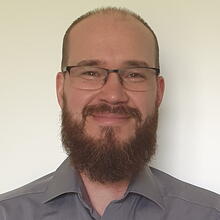

Axel joined Simpack AG as a project engineer for multibody real-time simulation and combustion engine simulations in 2005 after graduating with a diploma in applied mathematics at the Friedrich-Alexander University in Erlangen, Germany. After engaging on several projects in the area of multibody system simulation he took over product management responsibility first for Simpack combustion engine applications and later for the complete Simpack standalone product.
Today he is the responsible product manager for integration of Simpack solver technology into the 3DEXPERIENCE platform through integrated native motion apps.


Björn PÅLSSON is an Associate Professor in Railway Mechanics at the Chalmers University of Technology in Göteborg, Sweden. Björn's main research interests are modeling and simulation of dynamic vehicle-track interaction and ensuing track degradation, focusing on switches and crossings (S&C, turnouts). Björn holds an MSc in mechanical engineering from Chalmers University and completed his Ph.D. thesis "Optimisation of Railway Switches and Crossings" in 2014.
Modeling and Simulation of Dynamic Interaction between a Rail Vehicle and a Railway Turnout Assembly using Simpack’s Linear and Non-linear Flextrack Modules
This presentation will provide examples of the modeling and simulation of dynamic vehicle-track interaction in railway switches and crossings (S&C, turnouts) using Simpack's linear and non-linear flex track modules.
In this presentation the
- modeling steps taken to implement the S&C models will be presented
- suitability of the different flex track modules for various analysis applications will be discussed
- modeling of flex track will be compared to the use of standard co-running track models
- simulation results will be compared to measured wheel-rail contact forces and track responses in S&C
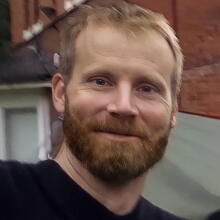

Bjorn VAN UEM is a well-known multi-body dynamics and vehicle dynamics expert within the automotive and motor racing industry. He holds more than 15 years of experience in multi-body simulation for a broad range of applications, such as ride comfort, handling, durability, powertrain, driveline, integration with control systems, and driving simulators.
Bjorn joined Jaguar Land Rover in 2015 as an MBS Development Group Leader and moved in 2019 to his current role, Manager – MBS Cluster & D&R CAE.
In his current role, he is now responsible for standardizing, advancing, and rolling out MBS simulation across many departments within Jaguar Land Rover to improve the efficiency of the product development process and facilitate well-informed engineering decisions.
Further, he is responsible for the vehicle program simulation support for Loads (MBS), Wading (CFD), and Underfloor Vulnerability (FE). Before joining JLR, Bjorn worked as a Mechanical Simulation Engineer at Mercedes AMG HPP, Brixworth, and a Technical Director at SIMPACK UK, Leicester.
Simpack Wizard at JLR: Methods Development and Durability and Robustness Programme Support
An overview of how Simpack Wizard is used at JLR across many departments, from vehicle dynamics to NVH, to standardize simulation methods and work with a single model concept built and released by a central team. As an example of vehicle program support, the Durability and Robustness team's Virtual Road Load data process will be presented.


Christoph RUDHART, born in Friedrichshafen, Germany, earned his Ph.D. in Theoretical Physics from the University of Stuttgart. After entering Daimler AG in 2008, he held several positions in the Departments for Powertrain Development and Chasis Systems. His main field of work is the Simulation of Ride Comfort with Simpack.
Simpack @ Mercedes-Benz Passenger Cars Development
Since its introduction in 2019, Simpack has become the primary tool for multi-body simulations in developing passenger cars at Mercedes-Benz. Applications range from predevelopment and predesign of chassis systems over durability calculations to ride comfort and NVH. The large variety of applications leads to many models and load cases with different states of complexity. To handle this, Simpack Wizard is used in combination with a customized Automotive Database, covering all the load cases and model variations, while keeping the common basis of the models as large as possible. The presentation gives an overview of the applications of Simpack in Mercedes-Benz passenger car development.


Gakuto NAKAYAMA has been successful in many projects to reform the development process of major manufacturers at foreign-affiliated companies. In 2005, Gakuto founded Progress Technologies, Inc. to promote further reformations from the customer's perspective and to develop new technologies.
In addition to supporting the product development of many manufacturers, Progress Technologies also developed and launched the world's first eOneBook reader, designed to give e-book readers a whole new reading experience. Gakuto has a track record of supporting start-up companies such as AI and robotics.
Vision for Performance-Based Design Using Simpack Vehicle Dynamics as a Digital Innovation
Digital solution with CAE technology is mandatory in automotive vehicle dynamics, such as handling and ride comfort. Especially, virtual verification with Multi-Body Simulation (MBS) is becoming more and more essential to provide a specification of each component. On the other hand, MBS has a challenge in shortening the entire workflow, including calculation, verification, and its management, due to the complexity of the model structure. The speed and robustness of the Simpack solver are expected to resolve it in combination with an efficient workflow in the design process. This presentation introduces a Simpack workflow for handling and rides comfort and its future vision, bringing efficiency to vehicle development.

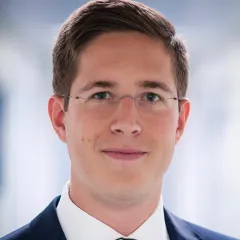
Gerwin PASCH, M.Sc., has been leading the Noise Vibration Harshness (NVH) group in the department of "Systems Engineering — Modelling and Simulation" at the Institute for Maschine Elements and Systems Engineering (MSE) since September 2019. In 2016, he began working as a research scientist at the MSE.
As part of his research, he develops methods and models for analyzing, optimizing, and evaluating noise vibration harshness behavior, NVH for short, of drive trains and vehicles. The research includes calculations using both elastic multi-body simulation and the finite element method and metrological investigations for configuration and validation of components, assemblies, and entire system models. Until 2016, Mr. Pasch studied Mechanical Engineering with a specialization in "Development and Design Engineering" at RWTH Aachen University.
Using EMBS and Numerical Transferpath Analysis for Optimizing Vehicle NVH
The NVH behavior of vehicles is a key purchase criterion nowadays. In the novel and alternative drivetrain concepts, tonal excitation sources often pose a challenge in terms of NVH. Validated simulation methods are needed to evaluate the NVH behavior in the early phases of the product development process. This presentation presents a general methodology to describe the drivetrain excitations over the entire sound transmission chain up to the airborne sound at the driver's ear. As an example, the application of the methodology is shown for a tractor with the hydrostatic-mechanical power-split transmission. The application is characterized by tonal excitations from the hydrostatic piston units. The transient system behavior is calculated via using EMBS and a developed force element describing the hydrostatic excitations. In addition, for optimization and target-oriented analysis of EMBS system models, numerical transfer path analysis (NTPA) methods are presented. The application of NTPA for NVH optimization is demonstrated using the tractor example. Measurement results confirm the numerically determined optimization measures.
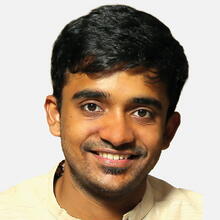
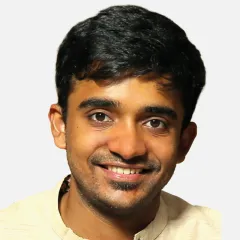
Govind has a bachelor’s degree in Mechanical Engineering and a Master’s degree in Computational Mechanics from RWTH Aachen University, Germany. He started working for Dassault Systèmes SIMULIA in 2015 as a back-end support engineer for Simpack. He currently holds the role of Portfolio Management specialist responsible for Simpack Rail and NVH modules.
His core domain expertise includes multibody systems simulation, rail vehicle dynamics, flexible body modeling and simulation. Govind has worked closely for multiple years with leading rail vehicle manufacturers, operators, and suppliers to help them design safe and sustainable transportation systems using solutions of Dassault Systèmes SIMULIA.
R&D Update — Rail Vehicle Dynamics
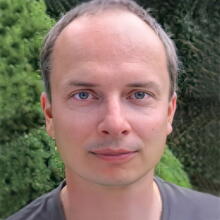
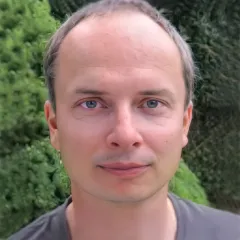
Biography:
After studying Mechanical Engineering at the Technical University Prag, Czech Republic, Jan ZEMAN completed his diploma thesis at Skoda-Auto, using the Multi-Body System (MBS) simulation software Simpack.
In 1999, Jan started working for the SIMPACK AG as a Project and Support Engineer, focusing on the simulation of Vehicle Dynamics (application areas: handling, ride, driveability, durability, NVH). From 2009 to 2014, as the “Product & Project Manager Simpack Automotive”, he was responsible for the Automotive product, customer project, and account management.
Following the acquisition of the SIMPACK AG by Dassault Systèmes in 2014, Jan is now focusing on the SIMULIA MBS/Simpack pre-sales management and strategic key customer engagements in his current role as SIMULIA Multibody Simulation Industry Process Expert Director.
Title: R&D Update on Multibody System Simulation
Abstract:
This presentation will give you an overview of the general R&D updates of the multibody system simulation software Simpack.
We will show you the latest software updates in Simpack, including a few of the updates from the last two years. Further, we will provide an update about application-specific functionalities.
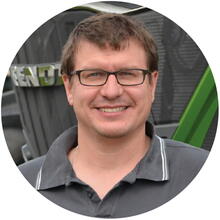

Johannes AMBERG studied Mathematics at the Technical University of Munich. After completing his studies in 2006, he joined SIMPACK AG as a project and application engineer.
In 2012 Johannes joined Fendt, which is part of AGCO. At Fendt, Johannes works within the development department. There he is responsible for the multibody simulation cases as a member of the system simulation team.
Simpack and FTire in High Horsepower Tractor Applications
First and foremost, a tractor had to do its job reliably — while driving-comfort taking a back seat. But nowadays, a driver also wants a comfortable driving experience.
In tractors, tires are a prominent part of the suspension system. It is impossible to fulfill the simulation scenarios' increasing requirements concerning comfort analysis with our current tire model. Because of this, we started a project together with cosin scientific software, parameterizing a pair of agricultural tires for our 900 series tractors. Because of the large tire sizes, we could not use current tire test rigs to get the tire parameter results. Hence we used a complete tractor as a test bench. In order to evaluate the tire forces, we set up the tractor with a lot of measurement equipment, especially wheel force transducers. Even though a challenging approach, we found this to be the right way to find a suitable parameterization for our simulation. We now can simulate all of our simulation cases with the generated parameter file for FTire.
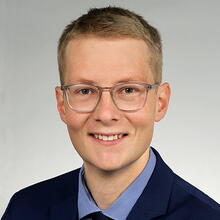
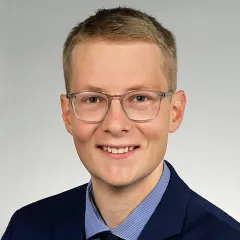
Jonas VUITTON is a Research Assistant at the Chair of Rail Vehicles at the Technical University Berlin. His main research topics are on the dynamics of rail vehicles, especially using numerical simulation, and the digitization of the maintenance of rail freight operations, implementing data-based maintenance strategies. Jonas’s research focuses on the rail freight system at the interface between vehicles and operations.
Modeling and application of a Y25 freight bogie in MBS
Freight wagons are generally regarded as the most simply constructed rail vehicles in terms of running technology. Although they usually have one spring stage only and the damping is ensured by friction elements, the modeling of freight wagons in MBS is rather complex. The parameters of the running gear depend on the maintenance status and the construction tolerances of individual vehicles and are difficult to determine. The modularly structured model of the Chair of Rail Vehicles of TU Berlin allows investigations of the dynamic behavior of four-axle freight wagons with the most common European bogie Y25. This model has been used in several projects and continuously improved in terms of accuracy and computing performance. It is integrated into an in-house MATLAB-based framework allowing multi-dimensional parameter variations. Exemplarily, a use case for the detection of rail obstacle roll-over incidents is presented. The model is used for the preliminary investigation of the derailment safety during the measurement campaign and the relevance of simulations for rail obstacle roll-over incidents is evaluated.


Juhwan LEE is currently a Senior Engineer at the Hyundai Motor company. There, Juhwan is responsible for the NVH analysis of powertrains and motors. Juhwan holds a master's degree in Mechanical Engineering from Korea University.
Multibody Dynamics Analysis and Reduction of Powertrain Rumbling Noise
Recently, consumers' expectations for sound quality are increasing, not only for expansive vehicles of medium-sized or higher but also for small and light vehicles. Among the noise sources, the rumble noise is harsh and unpleasant. Generally, the primary sources of rumble noise are crankshaft and powertrain bending.
In this paper, we analyzed the period and timing of occurrence of rumble noise by measuring noise and engine vibration in a vehicle. In addition, the test results were used to verify the dynamic analysis model of the crankshaft considering the hydrodynamic lubrication characteristics. Based on the validated analytical models, a major cause of rumble noise was analyzed. A method for improving the leading cause was studied, and the effect of the clearance between the crankshaft and journal bearings was analyzed considering the hydrodynamic lubrication characteristics.
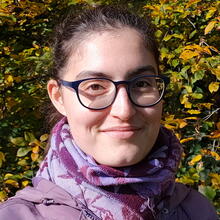
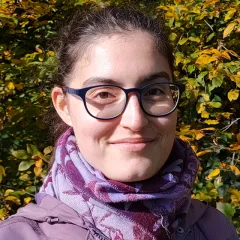
Justine LARIVIÈRE works as a Post-doctoral Engineer at the Department of Applied Mechanics in FEMTO-ST Institute in Besançon, France. In 2020, Justine graduated from the University of Franche-Comte with a doctorate in Mechanical Engineering funded by ALSTOM. Her main research field focuses on robust design with virtual prototyping tools, including sensitivity analysis, surrogate modeling, and design under uncertainties.
Robust Tolerancing of Railway Vehicles with Simpack Multi-Body Models to Ensure Dynamic Performance and Standard Compliance
A significant challenge for railway bogie design is to take into account uncertainties in operating conditions, suspension component manufacturing processes, and wear. Indeed, designers are faced with trade-offs between competing candidate solutions with antagonistic objectives and multiple design constraints. Virtual prototyping has become an essential decision support and certification tool for railway applications by leveraging multi-body models simulating nonlinear vehicle dynamics. However, this approach relies heavily on a large number of simulation runs, and strategies are required to reduce the computational burden. A robust tolerancing methodology specifically adapted to the multimodal design spaces found in bogie design and providing greater visibility for the trade-offs encountered in competing candidate designs is presented. The proposed robust tolerancing methodology is illustrated on a realworld railway application: an Alstom locomotive modeled with Simpack.
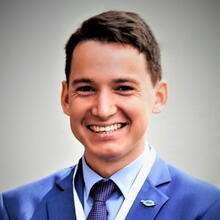

M.Sc. Kamil SAZGETDINOV is currently a Junior Researcher at the Virtual Vehicle Research GmbH within the Department Rail and doctoral student at the Graz University of Technology in Graz, Austria. Kamil’s main research areas include vehicle-track interaction, multibody dynamics, and track damage modeling for the railway turnouts application.
Simpack Multibody-Dynamics Model-Based Methodology for the Holistic Track Damage Evolution Prediction in Railway Turnouts
Railway turnouts feature discontinuities in wheel-rail contact geometry and track stiffness, which results in large dynamic wheel-rail contact forces, leading to a degradation of the rail surfaces and track irregularities over time. Analysis of the literature shows that researchers focus primarily on one damage mechanism at the time. However, the interplay and interconnection between different track damage patterns have not yet been addressed to the same extent.
This presentation aims to demonstrate a novel developed methodology based on the Simpack multibody-dynamics model. Thus, showing how the model can calculate holistic predictions for accumulated track damage in railway turnouts, account for the interplay and interaction between different damage patterns, e.g., such as the development of track irregularities due to ballast and subsoil settlement, and rail profile changes due to plastic deformation and wear.
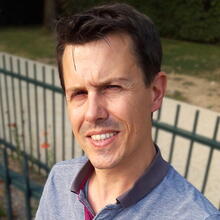
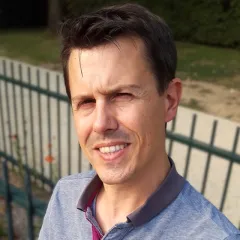
Ludovic GRANDJACQUES obtained his engineering degree in 2007 from SUPMECA Paris, gaining with it a solid mechanical knowledge merged with recognized expertise in IT development.
He has since been working at Stellantis (ex PSA) as a Numerical Methodology and Multibody Simulation Specialist Engineer. His dual expertise has enabled him to develop various middlewares, which perfectly adapt to different MBS and FEA software, meeting the needs and constraints of end-users.
These developments cover many automotive scopes, especially where multibody simulation needs an accurate and performing solver (Chassis, Powertrain Mount, Full Vehicle Load Predictions) and where standardized design processes require strong automation of calculation and post-processing.
Thanks to a brand-new API, provided in a record time by Dassault Systèmes, these middlewares are interfaced since 2017 with SIMULIA Simpack.
Ludovic’s favorite pastime is to help his fellow engineers by solving complex engineering problems by providing simple technical applications, getting his reward out of knowing that every single car produced by “his” company has been designed with the help of his solutions.
Stellantis Approach for Simpack Usage: Automation
The wide use of multibody simulation in the company by non-expert users has always required the use of middleware, making it possible to adapt the calculation tool to the group's standards, methods, and ways of working.
Today, around 150 people use Simpack every year, almost exclusively handling these middlewares as an entry point, allows the fusion of calculation expertise and automotive design processes without having to adapt one to the other directly.
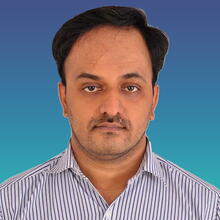
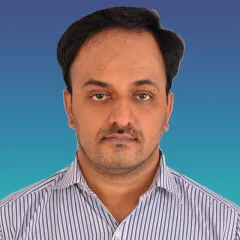
Manohar H C works as CAE Analyst at Mercedes-Benz R&D India. Manohar has around seven years of experience in NVH Simulations and is currently supporting front axle whine simulations for Mercedes-Benz cars.
MBS-FE Simulation Methodology for Front Differential Whine Noise
Front Differential Whine noise is a major concern and is a structure-borne vibration of the driveline due to Hypoid gear excitations. Identification of the vibration transfer path and optimizing the relevant structural components is the key to the solution.
We used Simpack to develop a flexible MBS model similar to the test bench considering the excitation from the Hypoid gear. MB Simulations were performed and a critical frequency where the response has to be reduced was identified. In general, mass and stiffness are varied to provide a solution for reducing the response at the critical frequencies. However, this approach is not optimal as it does not help to determine the exact location of the structure to be modified. We analyzed in detail mode shapes of the flex states contributing most to the vibration response at the critical frequency. The operating mode shape at the same critical frequency was reestablished in FE for structural optimization by using cutting forces from previous MBS analysis. MBS simulations were repeated on the optimized structure to verify the developed methodology.
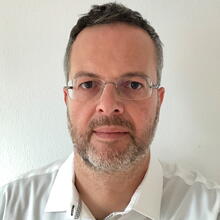

Marc LÄSSING graduated in 2000 as a Diplom-Ingenieur of Automotive Engineering at the University of Applied Science in Esslingen.
From 2000–2002 Marc worked at the former DaimlerChrysler AG as a CAE engineer at the Research & Technology Center for Vehicle Dynamics, having his first contact with Simpack.
In 2002 Marc joined the Daimler Commercial Vehicles CAE center for NVH Powertrain analysis. Marc is responsible for full vehicle simulations focused on drivetrain-induced vibrations and SiL co-simulation using Simpack and the center-wide Simpack installation.
Optimization of NVH Launching Performance of a Heavy-Duty Truck using Simpack as FMU in Interdisciplinary Co-Simulation
Modern trucks today use mainly automated manual transmissions, including automated clutch control. Launching behavior primarily depends on electronic clutch control and various hardware parameters like clutch friction behavior or clutch friction pad stiffness. To optimize the launching behavior regarding NVH and the performance, a full vehicle model including ECUs for engine, clutch, and transmission control was created, using Simpack as FMU inside an in-house co-simulation tool. Hardware parameters and software versions were evaluated to improve the launching behavior.
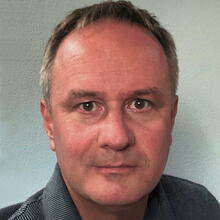

After studying Mechanical Engineering at the Technical University Munich, Germany, Marcus Schittenhelm completed his diploma thesis at BMW, using the Multi-Body System (MBS) simulation software Simpack.
In 1997, Marcus started working for the SIMPACK AG as a Project and Support Engineer, concentrating on the simulation of Complete Vehicle Dynamics (application areas: handling, ride, driveability, durability, NVH, real-time) and Mechanical Engine Dynamics (application areas: crank train, timing mechanism, valve train). From 2003 to 2014, as the “Director Simpack Automotive/Engine”, he was responsible for the product management, customer project management, key account management, and worldwide Simpack business development for the SIMPACK automotive industry sector.
Following the acquisition of the SIMPACK AG by Dassault Systèmes in 2014, he’s now focusing on the SIMULIA MBS/Simpack product management, strategic partnerships, and worldwide key customer engagements in his current role as SIMULIA R&D Director Portfolio Management.
R&D Update — Vehicle Dynamics

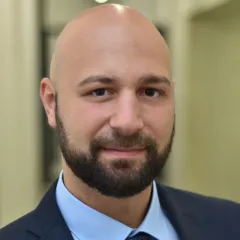
Biography:
Martin CARDAUN studied Mechanical Engineering, focusing on power engineering, at the RWTH Aachen University from 2010 to 2016. In 2016 Martin switched to the master's program of Power Engineering, specializing in regenerative energy technologies. Martin graduated in 2018 successfully with an M.Sc.
Since June 2018, Martin has worked as a research assistant at the Chair for Wind Power Drives at the RWT Aachen. His primary focus is on the MBS simulation analysis of gearless wind turbines' overall dynamics and acoustics. Since 2020, Martin has been the Team Lead of the Plant Design at the Chair for Wind Power Drives group.
Title: Wind Turbine Load Calculations with Nonlinear Flexible Rotor Blades
Abstract:
The trend towards increasing the power output of modern wind turbines leads to higher towers and longer rotor blades, resulting in more flexible structures. As these components increase in size, nonlinear structural behavior becomes increasingly important.
Therefore, accurate multi-body simulation models that consider nonlinear effects are needed. This presentation will present the workflow and usage of a new Simpack functionality for nonlinear model order reduction. With an exemplary rotor blade model, several tests will be done for both static and dynamic load cases as well as complete system simulations. It will be shown that nonlinear flexible bodies in Simpack agree with comparative calculations in finite elements software.
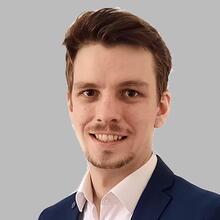
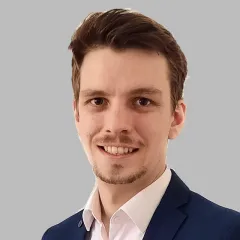
Max SCHISCHKOFF works as a Research Assistant at the Chair of Rail Vehicles at the Technical University Berlin. His main topics of research are the dynamics of rail vehicles using numerical simulations and the Digital Automatic Coupler (DAC) in rail freight transport. Max’s research focuses on the rail freight system at the interface between vehicles and operations.
Modeling and application of a Y25 freight bogie in MBS
Freight wagons are generally regarded as the most simply constructed rail vehicles in terms of running technology. Although they usually have one spring stage only and the damping is ensured by friction elements, the modeling of freight wagons in MBS is rather complex. The parameters of the running gear depend on the maintenance status and the construction tolerances of individual vehicles and are difficult to determine. The modularly structured model of the Chair of Rail Vehicles of TU Berlin allows investigations of the dynamic behavior of four-axle freight wagons with the most common European bogie Y25. This model has been used in several projects and continuously improved in terms of accuracy and computing performance. It is integrated into an in-house MATLAB-based framework allowing multi-dimensional parameter variations. Exemplarily, a use case for the detection of rail obstacle roll-over incidents is presented. The model is used for the preliminary investigation of the derailment safety during the measurement campaign and the relevance of simulations for rail obstacle roll-over incidents is evaluated.
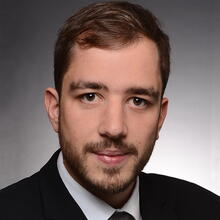
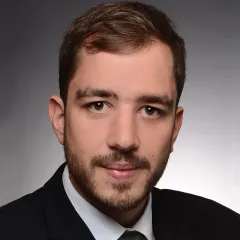
Robert BUCHMANN studied Mechanical Engineering at the Technical University of Munich (TUM) and graduated (M.Sc.) in 2018. After his studies, he joined the Institute of Mechanics of Professor Lion at the Universität der Bundeswehr in Munich as a Ph.D. candidate with a research project in cooperation with MAN Truck & Bus SE. The aim of the project was the entire virtual vehicle proving ground testing of busses for durability analysis.
Therefore, to analyze the durability of the frame structure, a multidisciplinary simulation process with a virtual prototype of the vehicle driving over digitized test tracks has been implemented.
Virtual Proving Ground Testing of MAN Commercial Vehicles for Durability Analysis with Validation and Identification of Dominating Mode Shapes for Structural Optimization
Customer and legislation in the transportation sector demand the development of disruptive commercial vehicle concepts to include new electrical drivetrains and batteries. For an early analysis of the structural durability of commercial vehicles, a virtual prototype was used. A virtual full vehicle test on digitized test tracks was implemented and validated for the durability analysis of bus frame structures within a research project. In this presentation, the simulation process, with emphasis on the flexible multibody simulation model and validation with measurements results, is shown. Furthermore, based on the modal contributions to the stress history, the approach for determining dominating mode shapes is described, and an example for a critical location is presented.
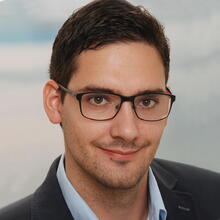

Robert KALCHER is a PhD student at the Institute of Mechanics, Faculty of Mechanical Engineering and Economic Sciences at the Graz University of Technology. There he received his BSc and MSc in Civil Engineering in 2009 and 2013, respectively.
In 2014 Robert received a Diploma Degree in Automotive Engineering from the University of Applied Sciences FH Joanneum Graz.
Currently, Robert works at AMSD Advanced Mechatronic System Development as a Development and Simulation Engineer for the automotive sector. Robert's research interests include nonlinear dynamics and multi-body systems.
Modeling of BEV Powertrain Mounts in BMW Complete Vehicles using Simpack MBS
Because of legal requirements and based on the general trend towards electrification, the amount of battery electric vehicles (BEVs) within the fleets of vehicle manufacturers increased steadily in recent times.
BMW is no exception with its current series production BEVs i3, i4, iX3, and iX. In general, BEVs deploy electric axle drives (EADs) as powertrain units at the front and/or rear axle. Furthermore, EADs are usually mounted to the vehicle's body or subframe via elastomer mounts.
Since such BEV powertrain mounts significantly influence the vibration comfort of the complete vehicle, the elastomer mount modeling and parameterization is a crucial and challenging task. Therefore, the work at hand deals with the MBS modeling of elastomer mounts, the associated fitting, and the subsequent incorporation of complete vehicle models within Simpack MBS software.
The virtual development process regarding vibration comfort using the module Simpack Wizard and its corresponding automotive database will be presented based on a case study.


Due to his high interest in scientific subjects, Steffen Brück decided to study mechanical engineering at the University of Applied Sciences in Bielefeld. After completing his bachelor's degree, Steffen chose to continue with a master's degree program in mechanical engineering to deepen further his knowledge in the field of computer-aided design and simulation.
During his master's studies, Steffen followed modules like FEM and MBS with particular interest. Because the practical work with Simpack and Ansys was of specific interest to him, Steffen decided to focus on this topic in his final thesis. Steffen wrote the thesis of his master studies at DB Fernverkehr AG in cooperation with SBB and DB Systemtechnik.
After completing his master's degree, Steffen took up a position in the calculation department of DB Systemtechnik, where his tasks include strength calculation using FEM and the calculation of vehicle dynamic processes using MBS.
Simulation and Validation of the ICE 4 MBS Model during Switch Passage
In tests for approvals of railroad vehicles, the most significant forces usually are expected to show in the narrow deflection radii of switches. Measurements show a dynamic behavior of the forces, especially in the area of the movable switch tongue. Conventional simulation methods with rigid switch profiles cannot reproduce these dynamic effects.
As part of my master thesis, procedures needed to be developed to integrate the elastic behavior of the area of the switch tongue into an MBS model. Next, the dynamic effects of a moving switch tongue were observed in measurements and reproduced in simulation processes. To present the measured dynamic impact in simulation models, it was necessary to consider the elasticity of the switch-blade. Considering the elasticity, the switch-blade had to be created as a CAD model so that the elastic properties could be calculated in an FE model. Then component properties of the FE model were then transferred to the multibody simulation model via a reduced substructure.
In this presentation of my master thesis, I will show that the dynamic effects from measurements during a switch passage can be represented in an MBS model by considering the elastic properties of the switch tongue.
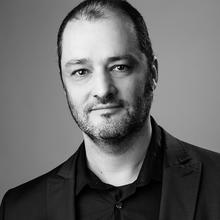

Biography:
Stefan DIETZ’s mission is to explore and make available new multi-scale physics for structures and motion simulation, to maintain and expand existing technology. Stefan leads the team flex body analysis, which contributes to the Abaqus and the Simpack solver.
Before the acquisition of Simpack AG by Dassault Systèmes Stefan was responsible for product management, customer support, and training for flexible bodies in the multibody system code Simpack. Stefan received a Ph.D. in 1999 in aerospace engineering.
Title: Structural Models for Wind Turbine Design
Abstract:
In contrast to high-resolution finite element methods, a strength of multibody system models is the description of the complex mechanical systems with a comparatively small number of degrees of freedom, which leads to a low computational effort. This is necessary for the analyses of multiple design variants. Different levels of modelling fidelity enable the optimum balance between computation time and depth of results to be achieved. Beam models are the obvious choice for modeling the flexibility of rotor blades in early design phases. The presentation covers the recent enhancements of composite beam models in Simpack and Abaqus. For a wide range of components where the assumption of small deformation and a linearized material law is sufficient, the modeling workflow starts with the generation of a reduced finite element model. A number of such models can now be assembled into a single linear flexible body, which improves the handling, and reduces computation effort, of a modular database. The presentation will also cover the preparation of linear flexible bodies in the structures apps of the 3DEXPERIENCE platform.


Biography:
Stefan HAUPTMANN graduated from the University of Stuttgart in 2006 with a degree in Aerospace Engineering. During his diploma thesis, Stefan developed the coupling of the wind energy aerodynamics module AeroDyn to Simpack.
Afterward, Stefan did research for another six years at the University of Stuttgart in the field of aeroelasticity of wind turbines, also using the software Simpack. In 2013, he joined MesH Engineering GmbH, where he leads the Wind Energy department, solving tasks for various customers in structural dynamics, aerodynamics, and the aeroelasticity of wind turbines and their drive trains.
Title: A Simpack-Based Digital Twin of Wind Turbine Drivetrains and its Applications
Abstract:
Since the beginning of 2021, the e-Twins joint project, which is co-funded by the German government, has been researching the benefits of holistic digital twin technology for the energy system. The energy system is considered at different levels: Grid level, plant level, system level, and component level. For these studied levels, different approaches have been developed to digitally represent the corresponding physical assets in a series of scenarios. These digital twins can be based on analytical approaches or reduced-order models (ROM) using machine learning methods.
As part of the energy system at the component level, wind turbine drivetrains are also described as digital twins. In addition to the methods described above, multibody systems can also be used to develop such a digital twin. This can be used as a virtual sensor to provide insight into the internal state of the powertrain, but its use within model predictive control will also be discussed.
The presentation will cover the various ways to develop a digital twin, focusing on wind turbine drivetrains and the realized representation through a multibody system model. The digital twin will then be shown in a multi-level scenario that also includes a newly developed software platform for visualizing the current state of the power system.
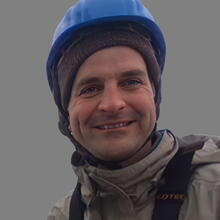

Steve has a Bachelor of Science in Mechanical Engineering, including work placements at GE and BMW, and a Master of Science in Design and Manufacturing.
Steve worked for the SIMPACK Company from 2000 to 2016, where he held the titles Director Sales and Marketing (2007-2016) and Director Wind Energy Solutions (2009-2016).
Following the acquisition of the SIMPACK AG by Dassault Systèmes in 2014, he has continued his work with wind energy clients as the company’s SIMULIA IPS, Industry Process Expert – Wind Energy Executive, promoting not just Simpack but all Dassault Solutions.
Steve has been supporting the wind energy sector since 2004.
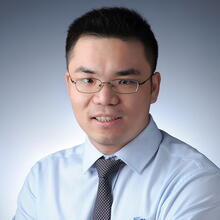
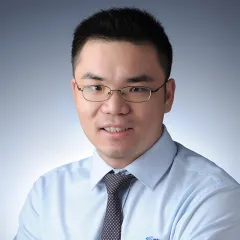
Yan YIFENG, a senior dynamics analysis engineer at Goldwind Science Technology, majored in Mechanical System Dynamics. During the past two years, Yan has primarily engaged in wind turbine dynamic simulation analysis and multidisciplinary co-simulation system development, including SiL and HiL simulation systems. Yan is the Project Manager of the wind turbine multidisciplinary co-simulation system development project.
Multidisciplinary Realtime Simulation System Construction and Application in Wind Turbine
Firstly, based on the Concurrent platform and Simpack software, SiL and HiL real-time simulation systems are established, respectively. Then the two real-time systems are applied in wind turbine, including verification and optimization of hydraulic pitch control algorithm, the evaluation of start-stop performance, the test of the primary control-converter-pitch system, and validation of control algorithm.
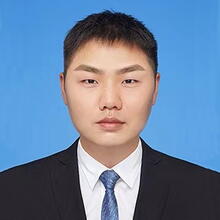

Yongming YAO graduated from Southwest Jiaotong University in June 2021 with a doctorate in engineering. At present, Yongming works for China Academy of Railway Sciences Group Co., Ltd., where he mainly engages in the research of pantograph-catenary dynamics.
Simulation Analysis of Vehicle-Pantograph-Catenary System
Based on the multi-body dynamics software SIMULIA Simpack and the finite element software ANSYS, the vehicle-pantograph-catenary coupling dynamics model is established. The dynamic characteristics of the pantograph-catenary system are analyzed.
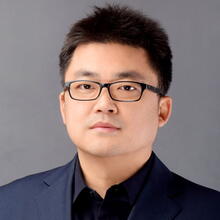

Yuan YAO received his doctorate (PhD) in Mechanical Engineering in 2010 from the Southwest Jiaotong University and began to work in the same year at the State Key Laboratory of Traction Power (TPL), a state key open research laboratory based on Southwest Jiaotong University. He received his Professor title in 2018. Yuan specializes in the dynamics simulation and analysis of railway vehicles.
Yuan has completed more than 50 projects sponsored by the Foundation and Railway Industry and has published more than 60 papers indexed by SCI or EI.
Yuan’s primary research interests lay in bogie design theory, hunting stability, vibration control, and new technology of suspension systems. In addition, Yuan has done several pieces of research on coupler stability in heavy haul trains and the driving system dynamics of locomotives.
The TPL research group has an excellent reputation within the Chinese railway industry for outstanding research and industry support in the core area of railway vehicle dynamics design and field testing. Over the past decade, they played a vital role in China in almost all types of new locomotive bogie designs and analysis.
Lateral Stability Design of Railway Vehicles based on Simpack Multi-Objective Optimization
During the long-term service, the lateral hunting stability of railway vehicles will be inadequate due to wheel-rail wear and variations in contact states, which could lead to phenomena such as low-frequency swaying, vibration acceleration alarm, and high-frequency shaking. In order to take into account the wide wheel-rail contact state, the suspension parameters matching of railway vehicles based on stability/comfort Pareto optimization, and the matching laws for the robust lateral stability design based on the special engineering requirements are summarized. The establishment and analysis of vehicle dynamics models are accomplished by SIMPACK code, and the optimization algorithm such as genetic algorithm NSGA-Ⅱ is adopted through MATLAB Co-simulation. The extended development of SIMPACK script languages, such as pre-processing language .sjs and post-processing language .qs is implemented for the multi-parameter and multi-objective optimization problem. Finally, several vehicle models are exemplified to illustrate the feasibility and efficiency of this method in engineering applications.